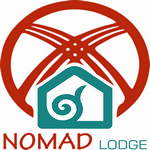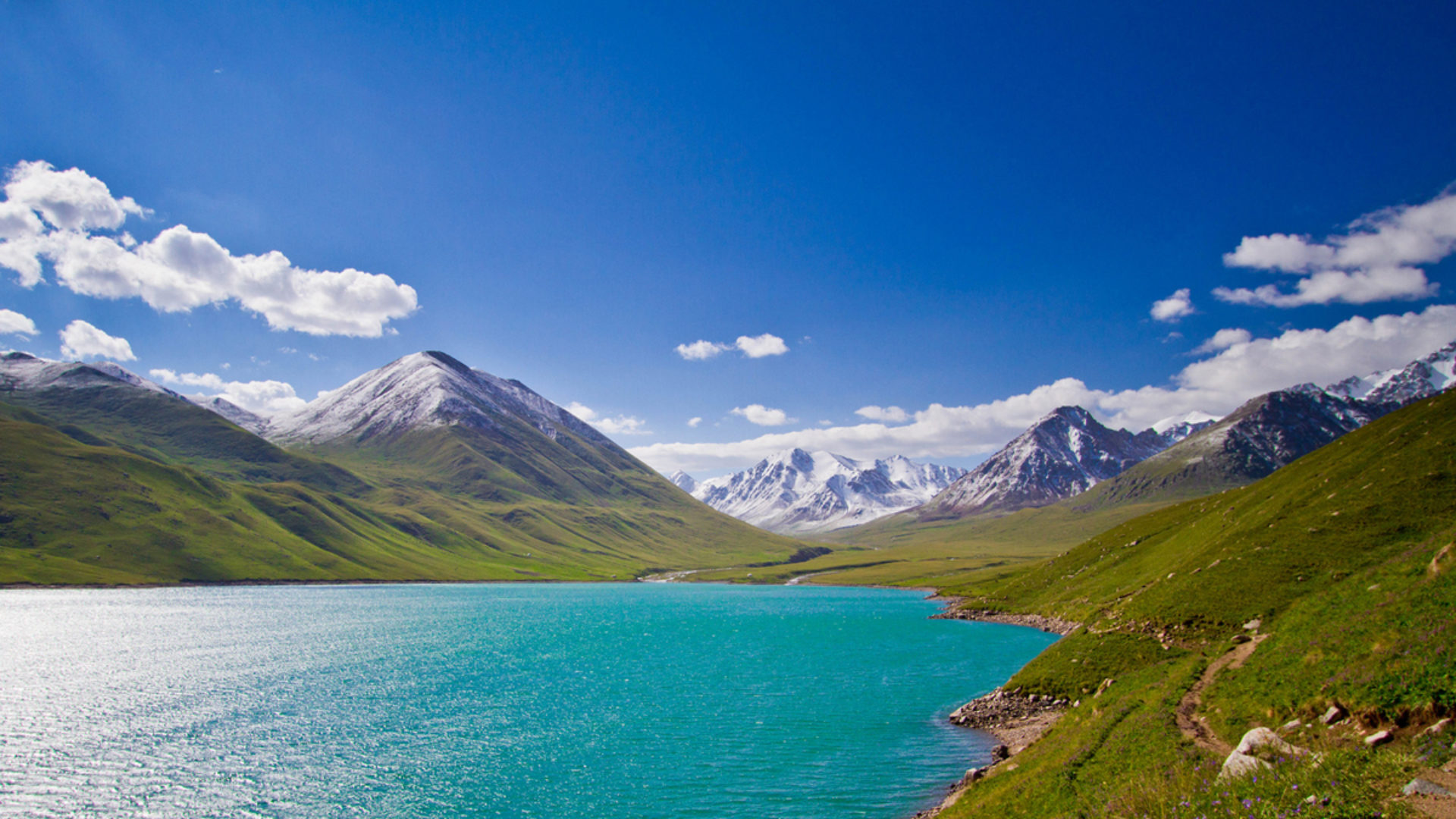Monuments of history and culture on Great Silk Road.
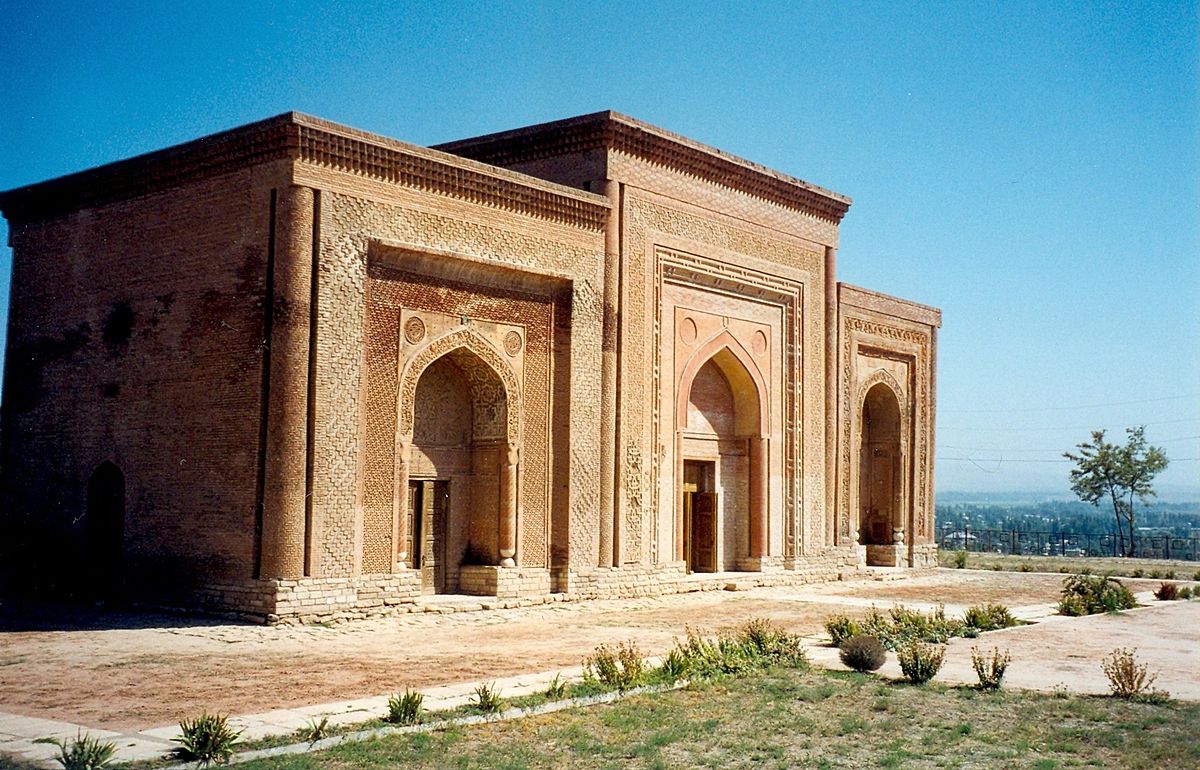
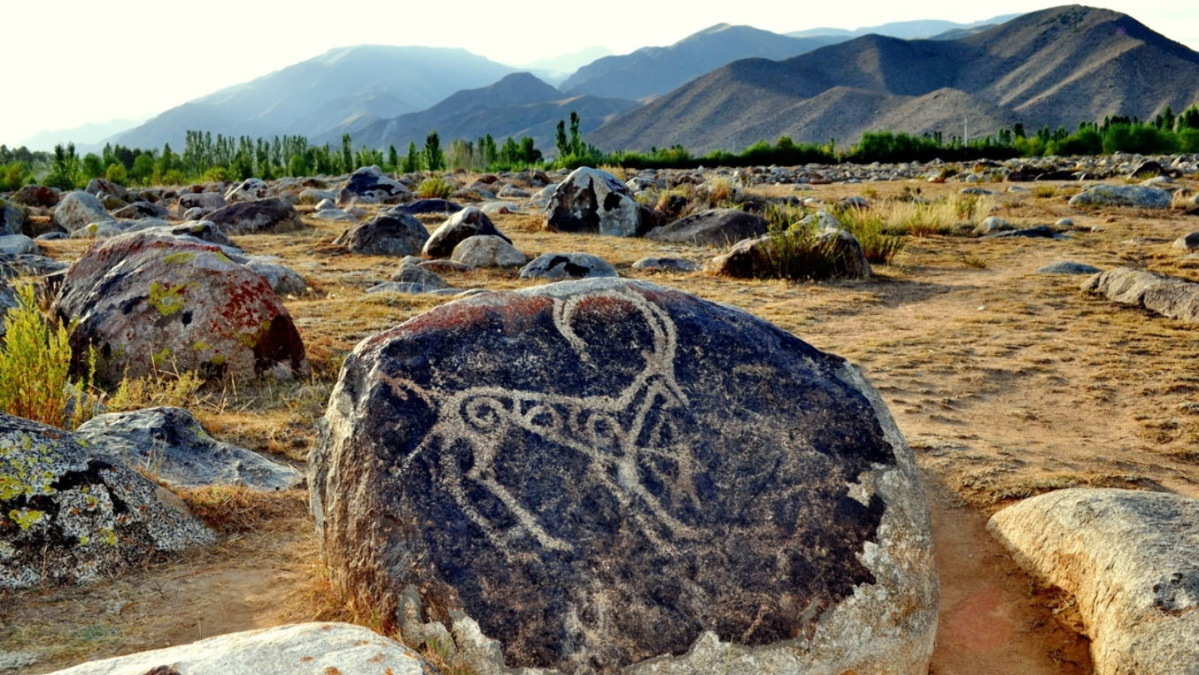
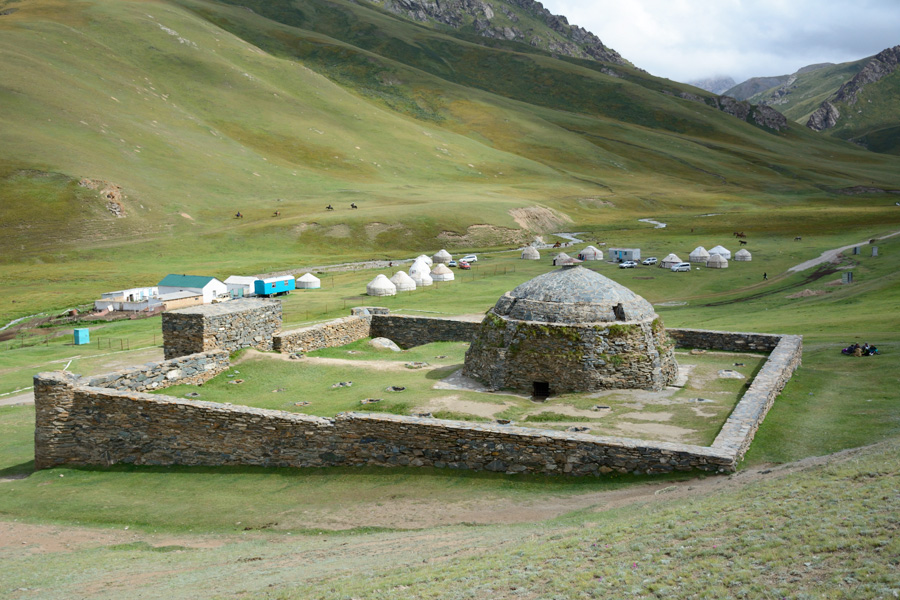
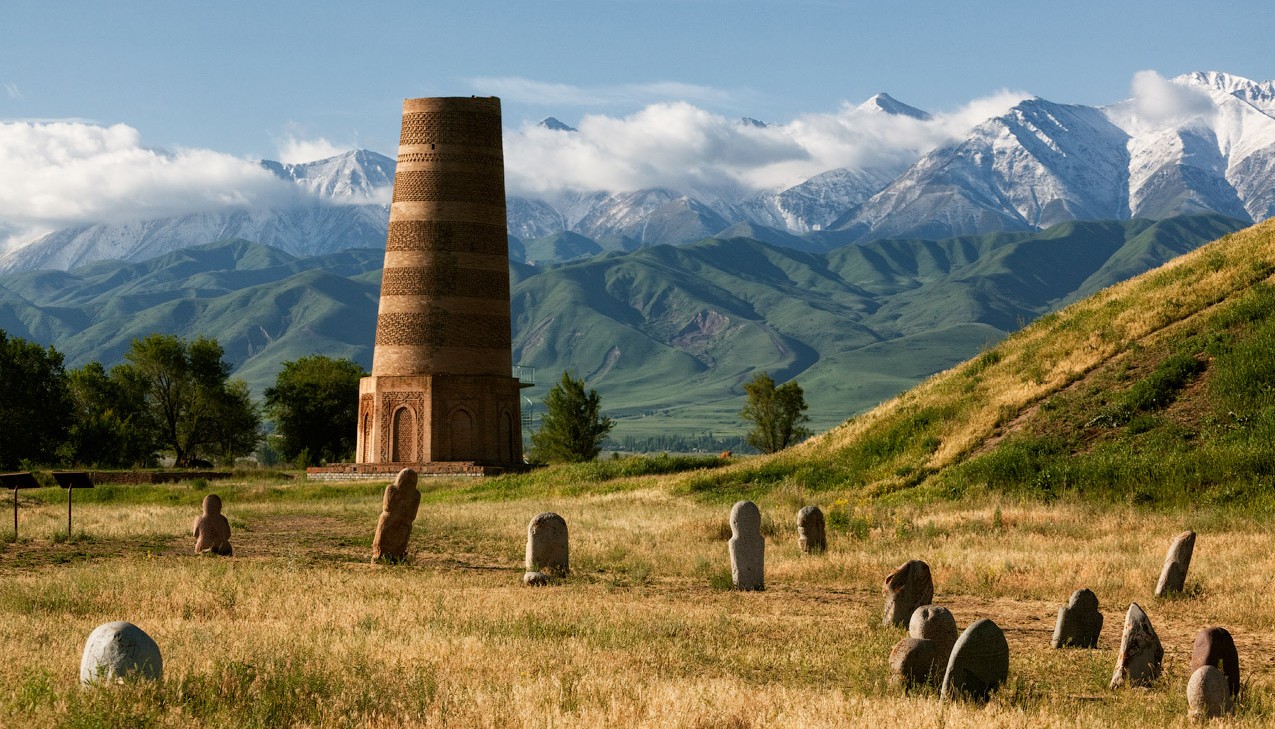
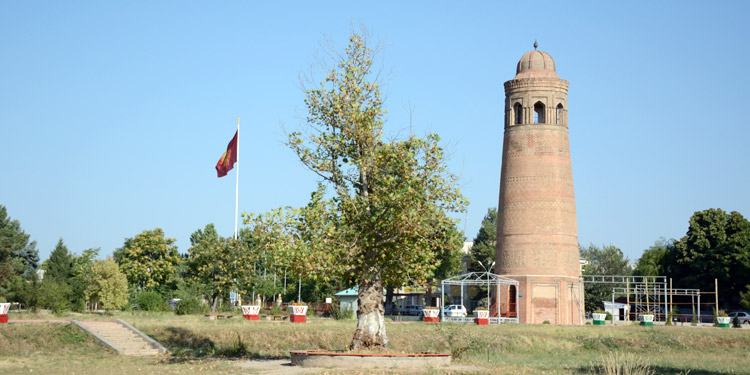





The Great Silk Road in Kyrgyzstan is represented by sections of different branches, which are well expressed and marked by different cultural monuments demonstrating three chronological positions: antiquity, early and developed Middle Ages (2nd century B.C. – 16th century AD). It is safe to say that our country was part of the zone of early contacts, both in the south and north of its modern territory. One of the most significant monuments of history and culture on the Great Silk Road can be referred to:
Burana Tower (Tokmok city): the ancient settlement is a ruins of ancient city Balasagyn – the capital of Karakhanids Kaganate. During the rule of the Karakhanid’s dynasty there occurred a rapid growth of cities and villages, trade and handicraft were developing. Also there was developing the process transition from the nomadic style of life into settled style.
In this museum this Burana Tower is the main monument. Except it, there are many other different exhibits, for example, images of-various animals on stones, drawn in VI-IV B.C. and stone statues of turks VI-X B.C., minaret with general height of –216m stands on eight-sided foundation with a spiral screwed staircase inside.
Ak-Beshim ancient settlement (8 km south of Tokmok): is the ruins of the city Sujab (the capital of state formations of the Western Turks). The ancient settlement was opened in 1894. In the centre of the settlement there is a shahristan or the core of the city, with a fortified citadel, covered behind a fortress wall with the remains of watchtowers. Here you can see petroglyphs, burial mounds, a Nestorian monastery and a complex of Christian churches and two Buddhist temples.
Navaket settlement (village Krasnaya Rechka): is the greatest site of ancient town in the second half of VI century with an area of 120 hectare. The fundamental religions in the town were Buddhism and zoroastrism, the corresponding excavations of temples confirm this. All the buildings in the town were constructed from clay and raw bricks. Most of all the walls of a Buddhism temple, which were more than a meter thick, had been kept. In archeologist’s opinion, a citadel (14 meters high) surrounded by a ditch full of water was a central building of the settlement.
Caravanserai – Tash-Rabat: built in the 10th c., originally served as a monastery and after as an inn on the way of caravans. The building consists of rooms inform of rectangular at the base. A wide corridor leads to the central hall, where small holes are carved on the ceiling, letting in daylight. The facade of the building is facing east, has a portal with a classical arch and corner towers, which are literally designed for a sentinel guard. The roof of Tash-Rabat is topped with twenty small and one large dome.
Castle Koshoy-Korgon: monument of VII-X centuries, which served as a fortress for the Turkic rulers. It was a place of a halt for trade caravans. The structure has clay walls in the form of a rectangle. The height of the walls reaches 10 meters, they were circled by a moat of huge size. At present, a museum has been opened there, which presents findings from the settlement itself and from all over Naryn province – tools, household items, military equipment, elements of the national culture of the Kyrgyz people, as well as exhibits telling about nomadic life and everyday life.
Gumbez of Manas: the monument is situated on the upper, mountainous part of the Talas valley, near the mouth of Kenkol River 12 km to southeast from Talas city. The mausoleum orientated on the four cardinal points, the only entry is situated in the south. The building was built without the base on the platform, which was flattened as horizontal surface. Burned bricks on clay solution make the walls. The building is covered by double-dome. The main facade of the building is flanked on the corners by the let out three-quartered columns, slightly narrowed to the top.Front walls of the mausoleum are covered art décor from cut slabs unuttered terracotta; secondary facades are of unplastered brick laying in horizontal lines. Archivolt arches are based on three-quatered columns. Architectonics of the main façade of ‘Gumbez Manas’ was built on the shape of portal arch with ornamental lines alternating narrow and wide strips with big or small patterns.
Petroglyphs in Issyk-Kul: Bronze period and middle of 1000 B.C. site at north-west outskirts of Cholpon-Ata. These are rock paintings carved on hundreds of boulders depicting goats, deer, horses, camels, predators, hunting scenes, etc. The drawings are made by engraving method. There are also numerous kurgans of Sako-Usun time These pictures testify about the direct relation between the man’s working activity and early shapes of art. In virtue of accumulation of rock pictures we may consider them to be original cult temple in the open air, the place of worships of olden nomads.
Suleiman mountain: In the center of Osh city there is Suleiman mountain at an altitude of 1106 m. Suleyman mountain, its slopes and foot are full of valuable historical monuments of the past, both archeological and architectural. Its chronological rang stretches from Stone Age to late Middle Age.
Hundreds of petroglyphs are carved on the rocky outcrops of the mountain, on stone slabs, on the walls of caves and grottos. Whole inscriptions on the southern side of the mountain and lifting ceramics, identical to ceramics of the Chust culture, according to its paintings and its way of making were carved.
Shah-Fazil Mausoleum (Jalal-Abad region): is a monument dated to the Karakhanid period, X-XII centuries. The ethno-cultural complex includes: the Mausoleum of Shah Fazil, the sacred mountain Archa-Mazar, the Mausoleum of Alamberdar, the cave of the holy hermit, the place of execution of 2700 Muslim soldiers, a mosque of the XVII century, vertically installed stone, as well as mausoleum Safed-Bulan, dating from the XIX century. The mausoleum has a square shape, and the dome is made in the form of a truncated pyramid. The walls of the mausoleum are covered with decorative ganche carving. Shah Fazil Mausoleum was a place of pilgrimage of Muslims of the Ferghana Valley for many centuries and remains so to this day.
Uzgen minaret (Uzgen city): built in the early XII century, was the capital of the state of Karakhanids. The minaret is 27.5 meters high, built of burnt brick of different caliber size, which is laid in several ornamental belts by openwork masonry. Nearby there are mausoleums of Karakhanid rulers. Their facades face south-west, forming one square. In the south the square is cut off by the Kara-Darya River, and in the south-west it turns into an ancient necropolis of XIII-XIV centuries. Between Uzgen and the village of Kara-Kulja there is the Kara-Darya ancient settlement of III-IV centuries B.C. and the Shoro-Bashat ancient settlement with extensive ruins from the times of the Kushan kingdom.
Saimaly-Tash: it is a rare monument with a great number of rock paintings. The rocks in Saimalu-Tash depict animals, people, chariots and hunting scenes. The word Saimaly-Tash means “patterned mountains”. Over 10,000 stones with drawings were found in Saimaly-Tash.
Monuments of history and culture on Great Silk are of unique cultural value for humanity. UNESCO therefore pays special attention not only to studying but also to preserving the huge heritage left by ancient peoples to present generations.
Although the Great Silk Road has not existed for several centuries, its memory remains in the minds of the peoples through whose territories it has passed. It is an important page in the history of all humankind.
Journey along the Great Silk Road is a unique opportunity to travel through the places where caravan lines with unique goods once passed, to get acquainted with the culture and values of the people, to see architectural constructions of the Middle Ages, as well as to enjoy the unique mountain landscapes.
